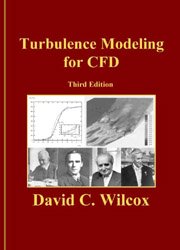Turbulence modeling for CFD download
Par enlow michael le jeudi, juin 30 2016, 16:58 - Lien permanent
Turbulence modeling for CFD by David C. Wilcox


Turbulence modeling for CFD David C. Wilcox ebook
ISBN: 0963605100, 9780963605108
Publisher: DCW Industries
Page: 477
Format: pdf
A wide range of built-in turbulence models for high and low-Reynolds number flows; LVEL model for turbulence in congested domains and a variety of K-E models, including RNG, two- scale and two-layer models. Article: Wang YJ and Zhang KM (2012). Despite this, a single mathematical model that covers all kind of turbulent flows has not yet been derived. This differs it from Anyway, the accuracy depends on: 1).the physical problem; 2). Turbulence Modeling for Cfd/Book and Disk. One of the alternatives for CFD simulation is lattice Boltzmann equation (LBE), where fluid is treated as fictitious mesoscopic particles (not molecules). CTAG's transport model is referred to as CFD-VIT-RIT. Most of the dispersed flow models are two subgrid-scale models (as in Figure 9). Turbulence modelling is a key element in Computational Fluid Dynamics (CFD). The current engineering approach uses comprehensive codes (simplified, low-order flow models) and CFD (high-order, first-principles flow simulations). Coupled turbulence and aerosol dynamics modeling of vehicle exhaust plumes using the CTAG model. The purpose of this study is to use CFD numerical methods to simulate and analyse turbulence flow through a low pressure T106A turbine cascade and the analyses of the effect of free stream turbulence intensity on boundary layer separation. The target audience for this course is practicing engineers who wish to learn more about how to choose and apply effective turbulence modeling in their CFD analysis. If you need something to make you sleepy, It may create some turbulence in the CFD market because : Not N-S equations based. ANSYS offers three valuable resources – blog post, white paper, and technical paper (registration required for the paper) – on turbulence modeling [a field of study that makes astrology look respectable]. Main Duties/Responsibilities: Cavitations modeling; development of precondition algorithms; development of turbulence models with CFD software. The description of bubbly flows involves modelling of a deformable (gas-liquid) interface separating the phases; discontinuities of properties across the phase interface; the exchange between the phase; and turbulence modelling. The numerical implementation; 3). Turbulence models are necessary because we cannot afford big enough computers to directly capture every scale of motion. The prediction from the Smagorinsky model in the Neptune CFD code and the one-equation model of CFX-4 was compared with the measurement data of Deen et al.